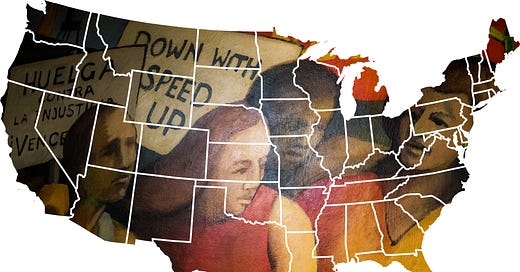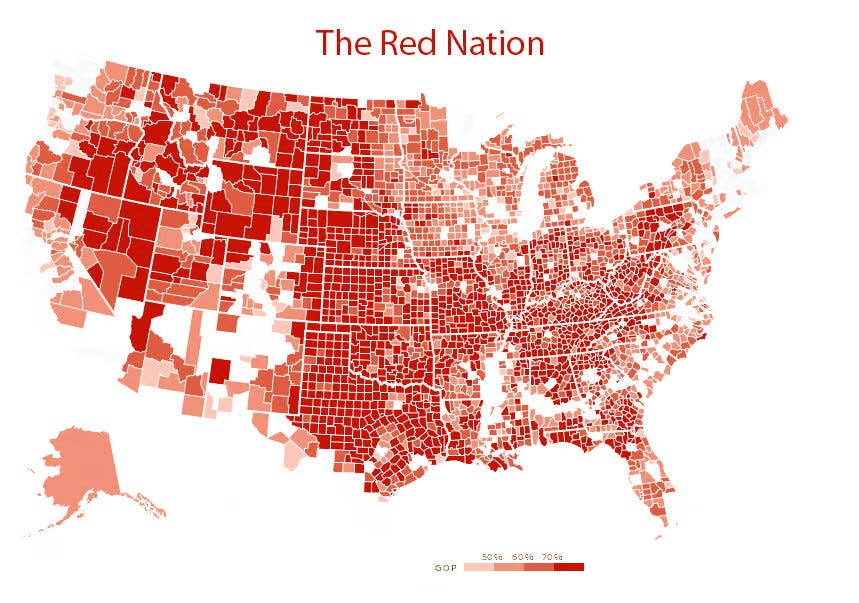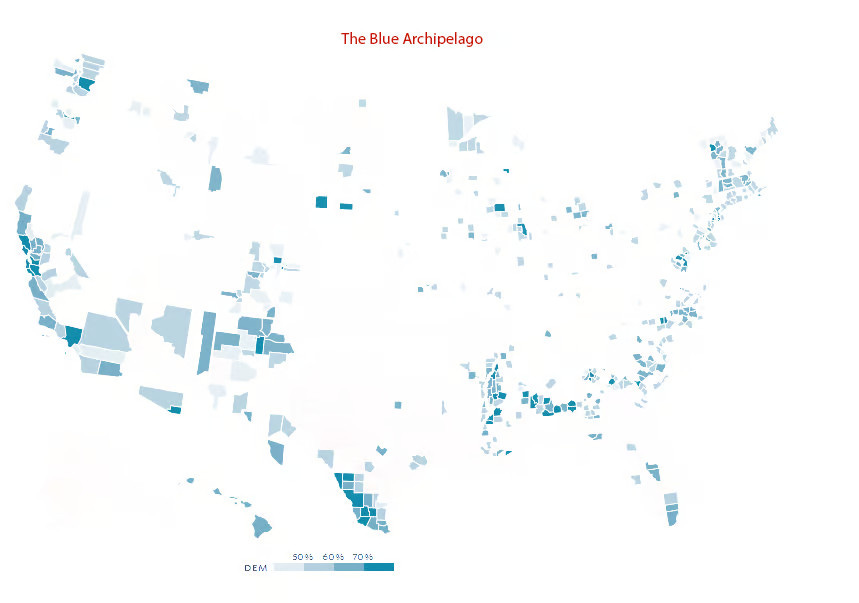On election day, I logged out of all of my social media accounts. For the rest of the week I stayed logged out, and did a fairly good job of not reading non-essential emails. It was one of the best decisions I have made in a while — I was blissfully insulated from “takes” (other than, of course, the one I ghost-wrote for the UE officers as part of my job).
As I’m slowly easing myself back onto the internet, I’ve noticed that a lot of people I know have been posting about the importance of art, both making it and spending time with it: taking the time to commune with a painting or sculpture, really listening to music, reading actual books. Art as resistance, as healing practice, as a way of being human in the face of inhuman conditions.
In his 2015 book Reclaiming Art in the Age of Artifice, the French-Canadian writer, filmmaker, and podcaster J.F. Martel argues that “art is the direct outcome of a basic human drive, an inborn expressivity that is inextricably bound with the creative imagination.” It “bears witness to the bafflement that the mere fact of existence elicits in our brains” and both stems from and embodies a sense of “radical mystery.”
Martel contrasts art to artifice, by which he means aesthetic production which “[aims] to make the percipient act, think, or feel in a certain prescribed manner. Artifice foregoes the revelatory power that is art’s prerogative in order to impart information, be it a message, an opinion, a judgment, a physiological stimulus, or a command.”
He notes that, especially with the rise of social media, “we have never been so heavily bombarded with artifice as we are now. Ours is a hyper-aesthetic age, a time of phantom images and blinking lights, manufactured memories, and synthetic dreams. ... What is more, the artifice that floods our private and public spaces seems to have a goal, namely the production of a completely artificial space in which emotions and desires respond solely to mercantile and political cues.”
Now that I’ve had over a week to sit with the results of the election, I’ve read a couple of takes. The political scientist Lester K. Spence, whose newsletter The Counterpublic Papers was one of the original inspirations for mine, sent his out last week. Or, more accurately, he re-sent a copy of what he wrote after the 2016 election.
In his 2016 newsletter, he included color-coded maps of county-level voting data from the 2016 election (I haven’t seen county-level data from this most recent one, but have to assume it’s broadly similar):
With the following commentary:
What do you see?
I know what I see.
I see something contiguous and more or less compact.
And then I see…if all the areas in between the blue spaces were filled with water perhaps we’d have a large archipelago…something that’s more imagined than not.
In other words I see a fully formed nation.... and then something that exists virtually. Connected by the internet, by airports, by black popular culture (particularly black language), and by certain forms of commerce.
When I was in Washington, DC a few weeks ago, I stumbled into Paris 1874: The Impressionist Moment at the National Gallery of Art. The exhibit displays works from both the 1874 artist-organized show which is generally cited as the birth of the Impressionist movement, featuring paintings by Monet, Renoir, Degas and others, and the 1874 French Salon show, representing the mainstream from which Impressionism was seeking to break away.
While I generally prefer my impressionist paintings a bit more, well, impressionist1, and didn’t have a lot of use for the French academic paintings from the Salon show, what I found really fascinating about the exhibit was the attention it drew to the historical context this was all happening in.
The birth of Impressionism occurred only a few years after France’s defeat in the Franco-Prussian War of 1870-71, the establishment of the Paris Commune by the Parisian working class and the soldiers that had been defending it in March of 1871, and its violent suppression in what was essentially a civil war between the city and the country two months later. Estimates of the number of communards killed range from 10,000 to 20,000, the majority of them slaughtered by the French army2 in a reign of terror after the Commune fell.
At the Salon, as the exhibition guide points out, the French cultural establishment’s preference for historical paintings “became one way to express pride in the enduring culture and traditions of France. The Salon jury in 1874 selected works with subjects that tapped into the raw emotions of a traumatized nation, as suggested by two biblical scenes: Alma-Tadema’s depiction of Pharaoh mourning his dead son, and Delaunay’s painting of David as a symbol of righteous vengeance.”
Meanwhile, the Impressionists painted the emerging bourgeois at leisure in public and domestic spaces, in suburbs and the countryside, “mov[ing] away from paintings weighted with political and social concerns toward colorful works that convey a sense of pleasure.”
One of my responsibilities at my job is to put together a print edition of the UE NEWS four times per year. It’s printed on four or five pages of 21 1/2 by 17 inch newsprint, folded to make sixteen or twenty pages, and then folded again for mailing to the union’s members. An actual, old-school newspaper.
Normally, designing the front cover is pretty easy: I just pick out the best photo about the most important story from the inside of the paper and plaster that on the first page above the fold. But during the first year of the pandemic, there was a dearth of photos coming in from the field, and screenshots of Zoom meetings, in addition to not being especially visually compelling, are simply not high-resolution enough to fill the 9 3/4 by 7 1/2 inch rectangle that is a UE NEWS cover. So I occasionally had to get creative.
I’m not sure what inspired me to take a co-worker’s photo of the “Solidarity” mural that then graced the inside of the UE hall in Chicago3 and mask it with a graphic of the 48 contiguous states. I don’t know if it is art or artifice. But I do think it was the perfect cover for the first issue to come out after the last presidential election, and perhaps worth revisiting after this one:
A few things I’ve read online recently that are not about the election:
Mia Milne has a review of the “fairphone” — a product I didn’t know existed until now — up at her Solar Thoughts newsletter on Substack. The fairphone is an attempt to create a sustainably-manufactured (“it’s made of recyclable materials and designed to be long-lasting”) smartphone with “deGoogled” software options. Milne’s review is a nice exploration of, as she says, “the promise and limits of green consumerism.”
Madeleine Dore’s latest public post at her Substack newsletter On Things, “To post or not to post things online,” is an interesting meditation on the complicated relationship between using social media and publicizing creative work.
One of the things that really struck me about the exhibit was how, with the exception of Monet’s Impression, soleil levant (“Impression, rising sun”) — the work that gave the movement its name — and maybe one or two others, the style of these early works by the Impressionists remained fairly conservative, with few of the loose brushstrokes and bold colors that we most associate with the movement.
Well, the parts of the French army that remained after its Parisian soldiers in effect deserted to form the Commune.
The photo was taken by J Burger, and the mural was painted by John Pitman Weber and Jose Jose Guerrero in 1974. UE Local 1122 President Emma Kennedy, a graduate student in art history at Northwestern University, wrote a UE NEWS Feature about the mural’s history and efforts to preserve it earlier this year, efforts which I’m happy to report have been successful.









Avoiding social media was a good call that I wish I had also done. Most of my feed has been recommendations to build "hyper-local communities", which I hope could help that blue archipelago. I like the idea of art as resistance and that times of hardship can become times for the creation of art for art's sake rather than just political commentary.
I appreciate the recommendation!